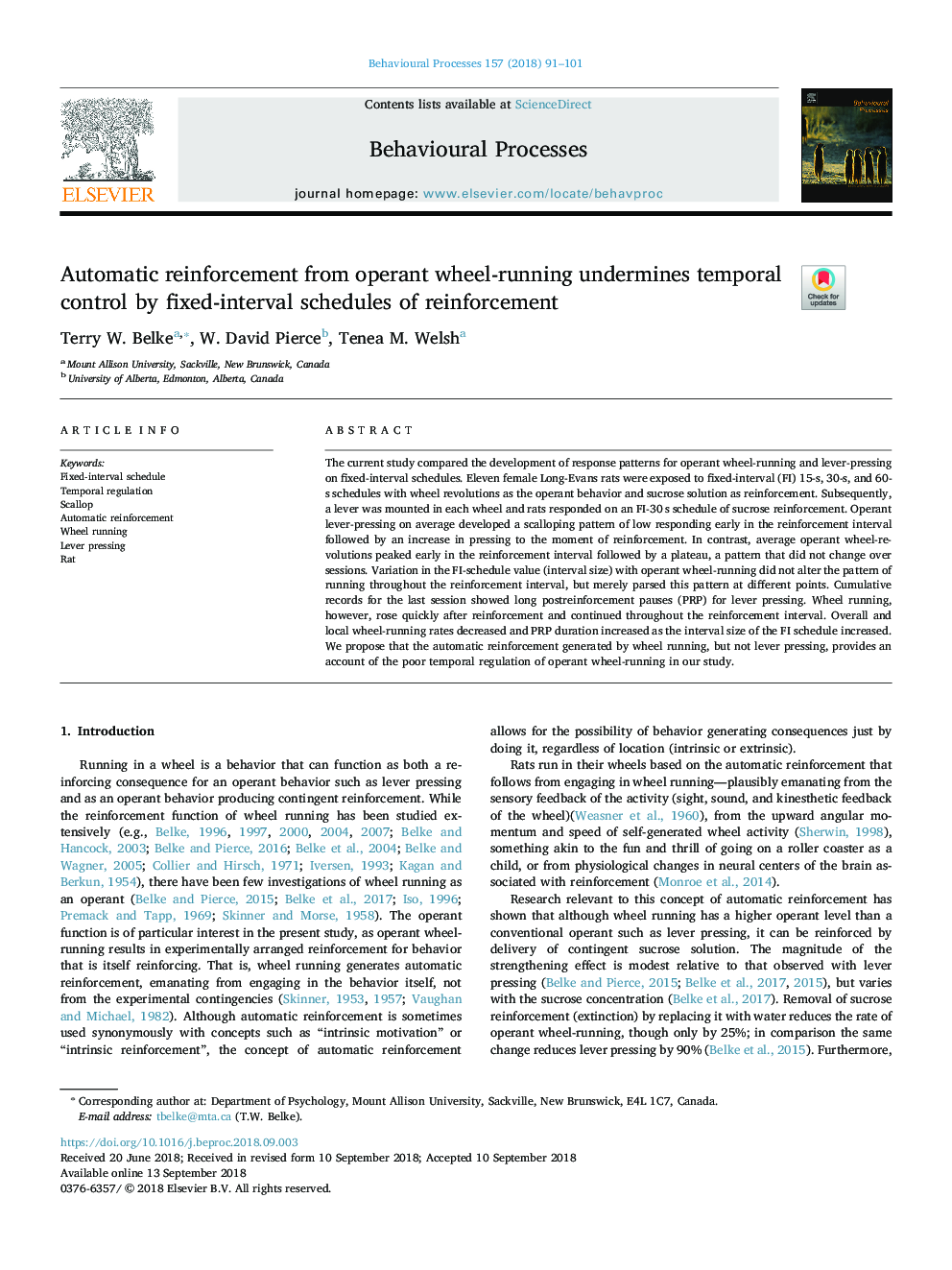| Article ID | Journal | Published Year | Pages | File Type |
|---|---|---|---|---|
| 10143158 | Behavioural Processes | 2018 | 11 Pages |
Abstract
The current study compared the development of response patterns for operant wheel-running and lever-pressing on fixed-interval schedules. Eleven female Long-Evans rats were exposed to fixed-interval (FI) 15-s, 30-s, and 60-s schedules with wheel revolutions as the operant behavior and sucrose solution as reinforcement. Subsequently, a lever was mounted in each wheel and rats responded on an FI-30âs schedule of sucrose reinforcement. Operant lever-pressing on average developed a scalloping pattern of low responding early in the reinforcement interval followed by an increase in pressing to the moment of reinforcement. In contrast, average operant wheel-revolutions peaked early in the reinforcement interval followed by a plateau, a pattern that did not change over sessions. Variation in the FI-schedule value (interval size) with operant wheel-running did not alter the pattern of running throughout the reinforcement interval, but merely parsed this pattern at different points. Cumulative records for the last session showed long postreinforcement pauses (PRP) for lever pressing. Wheel running, however, rose quickly after reinforcement and continued throughout the reinforcement interval. Overall and local wheel-running rates decreased and PRP duration increased as the interval size of the FI schedule increased. We propose that the automatic reinforcement generated by wheel running, but not lever pressing, provides an account of the poor temporal regulation of operant wheel-running in our study.
Keywords
Related Topics
Life Sciences
Agricultural and Biological Sciences
Animal Science and Zoology
Authors
Terry W. Belke, W. David Pierce, Tenea M. Welsh,
